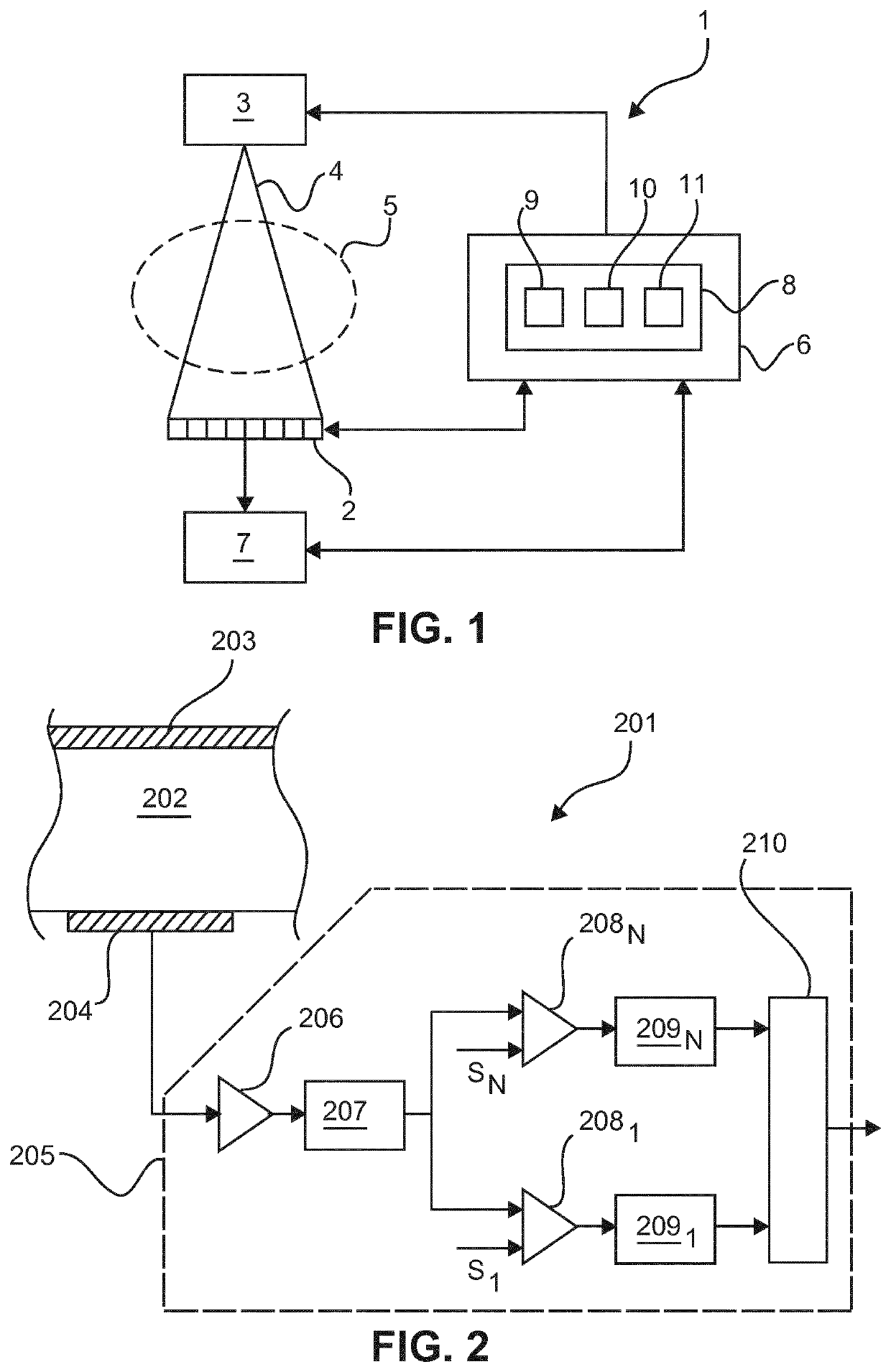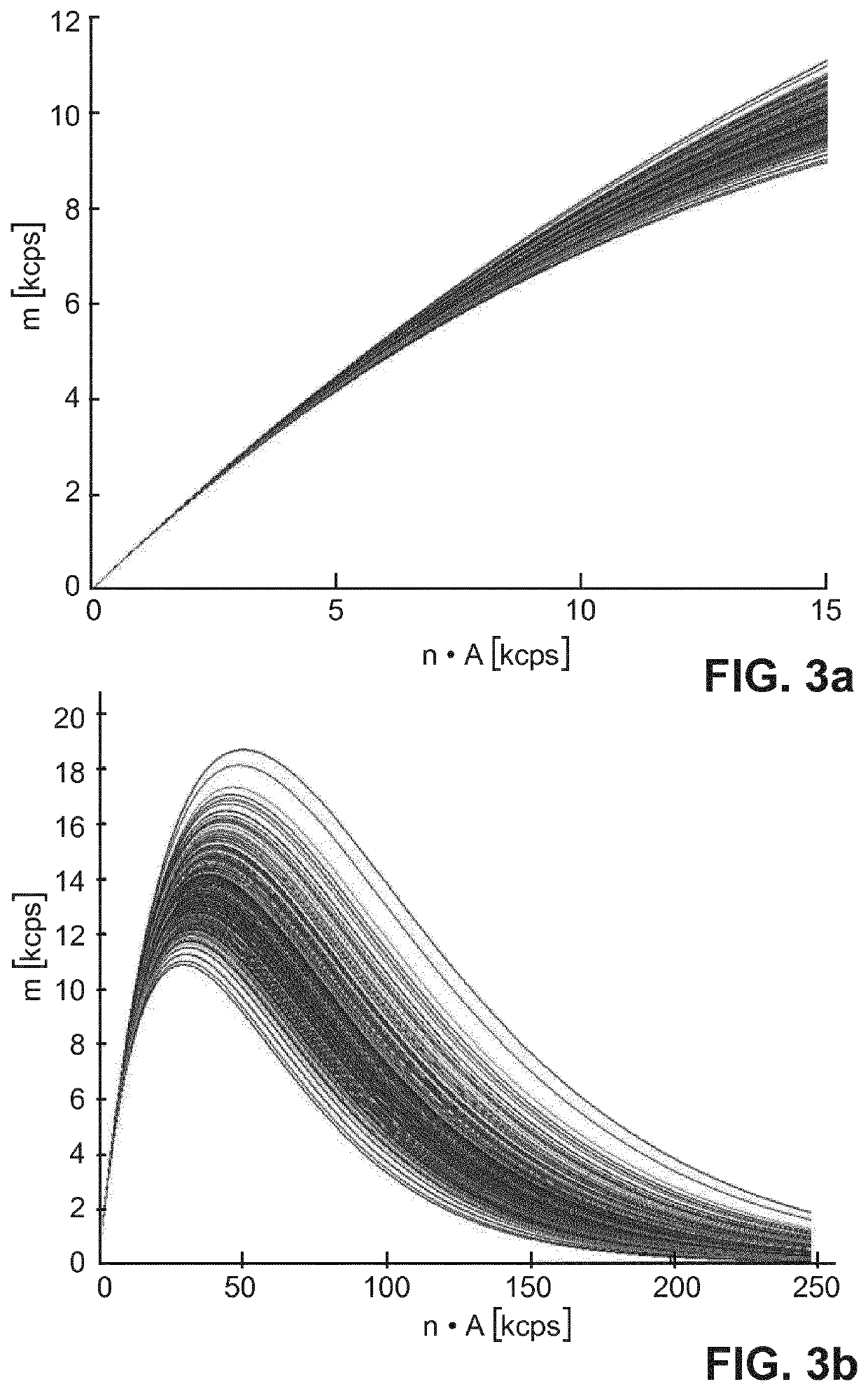Dead-time calibration for a radiation detector
a radiation detector and calibration device technology, applied in radiation measurement, radiation intensity measurement, instruments, etc., can solve problems such as inability to eliminate by means, and inability to achieve satisfactory results, and achieve the effect of reducing image artifacts
- Summary
- Abstract
- Description
- Claims
- Application Information
AI Technical Summary
Benefits of technology
Problems solved by technology
Method used
Image
Examples
Embodiment Construction
[0035]FIG. 1 schematically and exemplarily illustrates a radiation detector 2 for detecting x-ray radiation, which used in an imaging system 1. In the embodiments illustrated in the figures and described in detail herein below, the imaging system 1 is configured as a CT system for generating three-dimensional images of an object in a medical or other application, such as, for example, material testing. In other embodiments, the imaging system 1 may be configured in another way. For instance, the imaging system 1 may comprise a backscatter x-ray scanner including the radiation detector 2.
[0036]In addition to the radiation detector 2, the imaging system 1 comprises a radiation source 3, particularly an x-ray source, such as an x-ray tube. The radiation source 3 produces a radiation beam 4 which traverses an examination region 5 which is arranged between the radiation source 3 and the radiation detector 2 in case of a CT system so that the radiation detector 2 detects radiation travers...
PUM
| Property | Measurement | Unit |
|---|---|---|
| dead time | aaaaa | aaaaa |
| dead time | aaaaa | aaaaa |
| photon flux | aaaaa | aaaaa |
Abstract
Description
Claims
Application Information
 Login to View More
Login to View More - R&D
- Intellectual Property
- Life Sciences
- Materials
- Tech Scout
- Unparalleled Data Quality
- Higher Quality Content
- 60% Fewer Hallucinations
Browse by: Latest US Patents, China's latest patents, Technical Efficacy Thesaurus, Application Domain, Technology Topic, Popular Technical Reports.
© 2025 PatSnap. All rights reserved.Legal|Privacy policy|Modern Slavery Act Transparency Statement|Sitemap|About US| Contact US: help@patsnap.com


